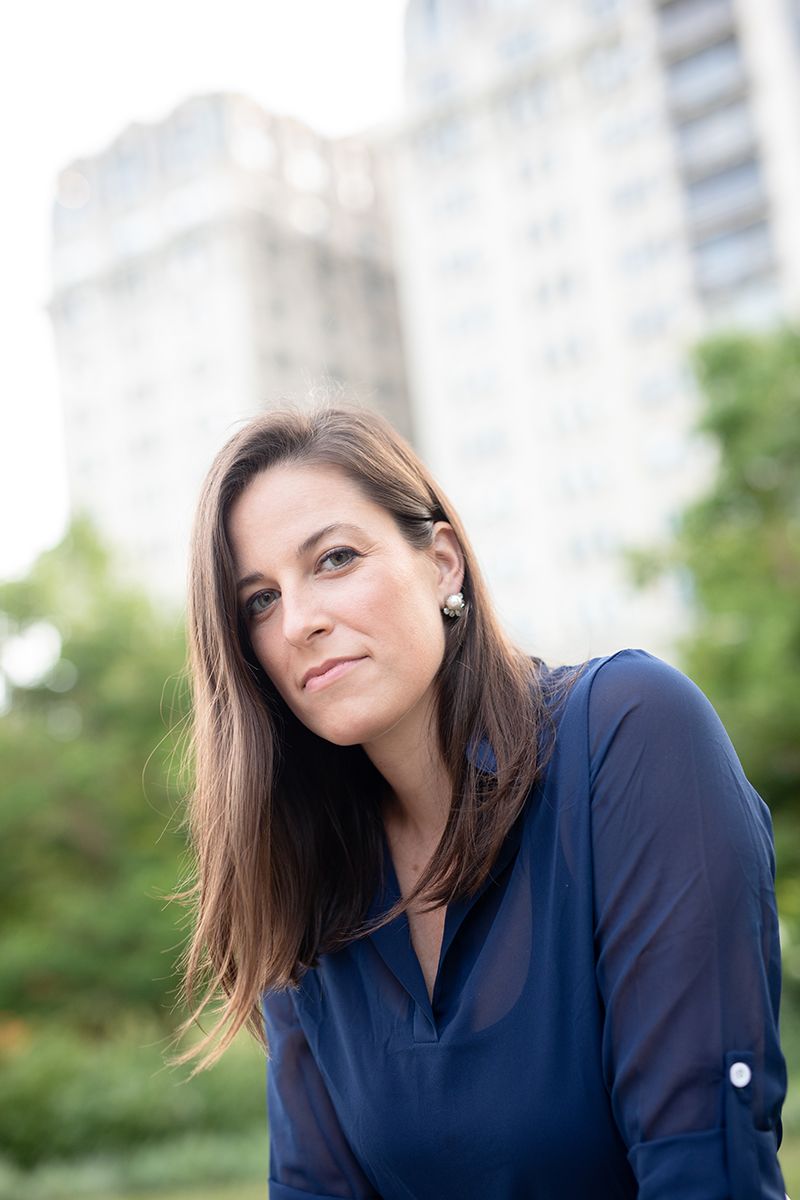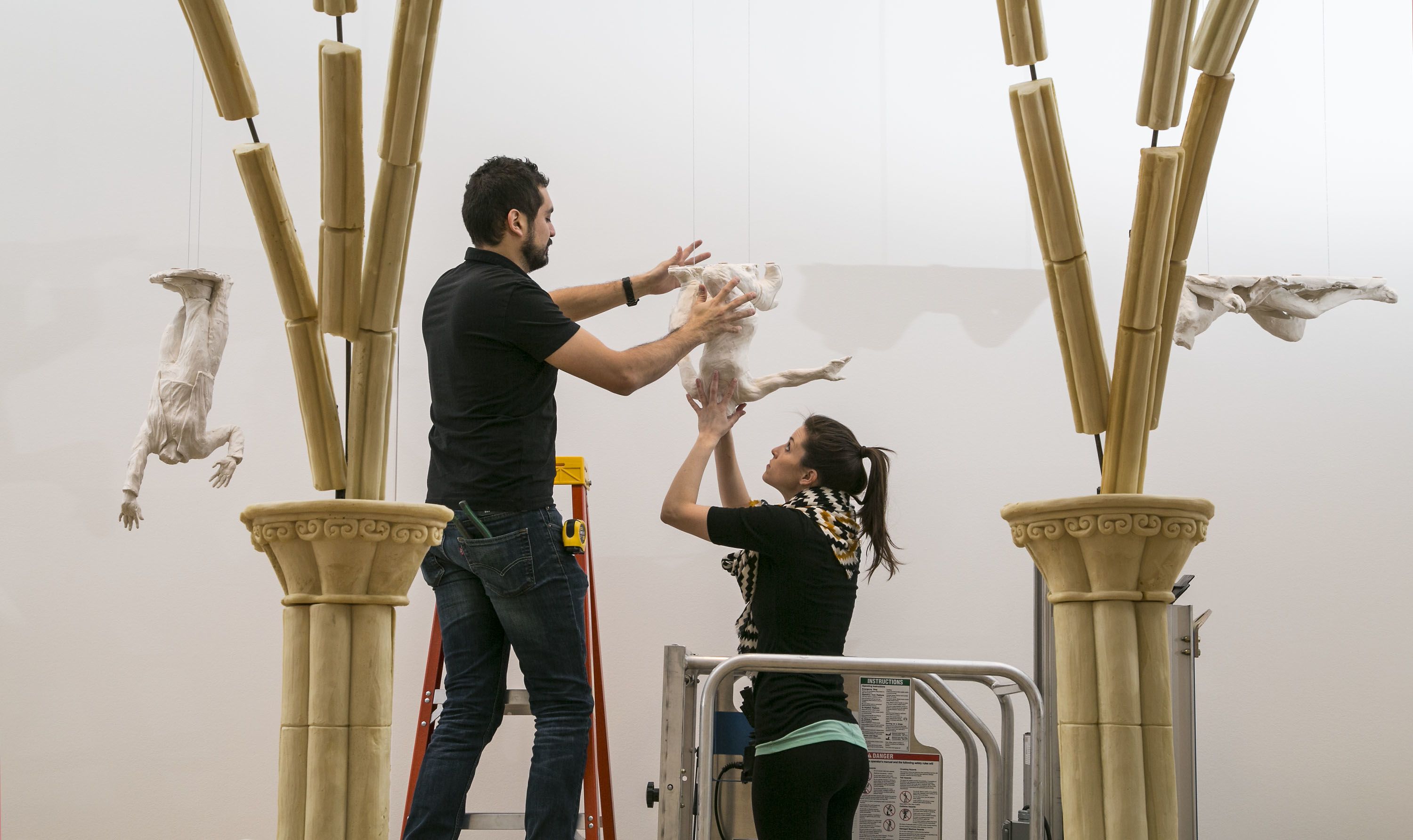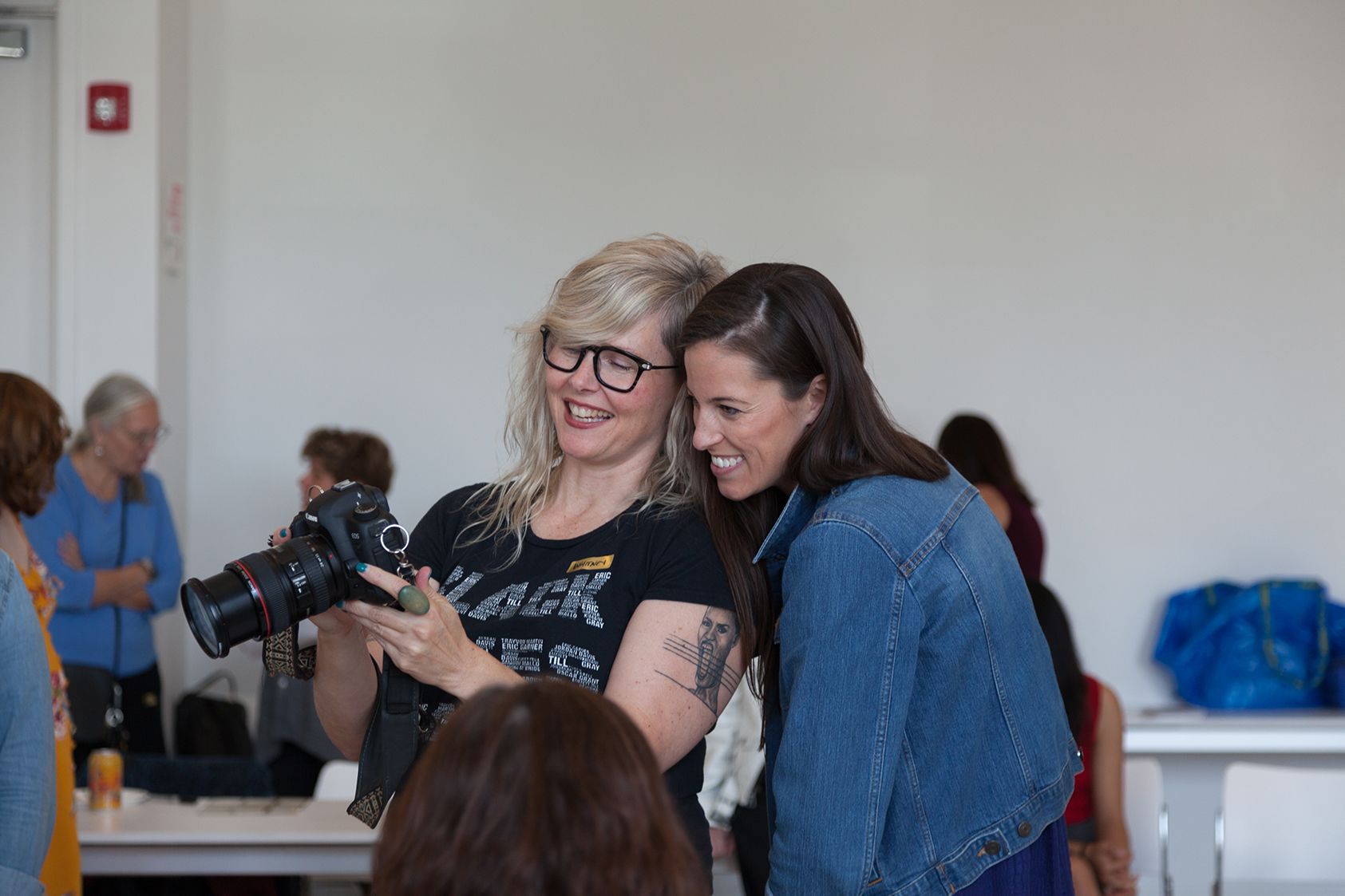Expert Advice from Laura-Caroline de Lara
Art is ... hands on.

by Zoya Brumberg (MA 2015)
As the new director of the DePaul Art Museum in Chicago, Laura-Caroline de Lara (Dual MA 2012) brings the words and work of marginalized artists to the forefront.
Her pathway through the museum world was full of unexpected turns, but the time she spent with community arts organizations and local artists ultimately informed her career as an arts administrator. In her time at DePaul University, de Lara has helped to launch the museum’s Latinx initiative, a program to highlight the work of Latinx artists in Chicago and across the United States. Looking ahead, she’s excited to strengthen ties between the museum, DePaul students and faculty, and the greater Chicago community. We talked to her about her journey.

Laura-Caroline de Lara and Rodrigo Lara (MFA 2013) installing work for a Winter 2018 exhibition. Image courtesy of DePaul Art Museum.
Laura-Caroline de Lara and Rodrigo Lara (MFA 2013) installing work for a Winter 2018 exhibition. Image courtesy of DePaul Art Museum.
What did you study during your time at School of the Art Institute of Chicago (SAIC)?
I went to SAIC for the Dual Master's Degree in Art History and Arts Administration. I worked at different arts organizations for three years before I started the program, with the mindset that I wanted to pursue a career as a museum curator, but I ended up being more interested in the collection care and project management part of arts administration. At SAIC, I worked in an exhibitions program where we curated student artwork for different buildings, corporations, and community spaces across Chicagoland. My thesis explored the work of artists who are often left out of the art historical canon, and that interest now informs the work that I do for DePaul Art Museum.
What did you do after you graduated from the dual MA program?
I was the program coordinator for SAIC’s Visiting Artist Program, but I really missed the exhibition side of things, so I took on the position of collection and exhibition manager for the Richard H. Driehaus Museum. After that, I got the job at the DePaul Art Museum, where I worked as collection and exhibition manager, associate director, then as our interim director. I was given the full director position this past January.
“My thesis explored the work of artists who are often left out of the art historical canon, and that interest now informs the work that I do for DePaul Art Museum.”
What did you do in these different roles?
Sticking to smaller museums allowed me to gain hands-on experience and an education that I felt like I probably wouldn't have received with a larger institution. When I started at DePaul, there were only four full-time employees. I had a hand in everything from developing the museum’s official collecting vision to installing lighting. Now that I'm in the director role, some of [those responsibilities] are being shared with newer staff, so that I can focus on our bigger picture for the future of our organization. We're a university art museum; a lot of my job is building relationships with faculty and students and staff across the university and helping them to connect with artists and others across the city. As a director, I think strategically about how we move the museum forward, particularly post-pandemic in the midst of a reckoning within the museum field. It is about evaluating who we are as an institution, what we do for our city, and why we exist to begin with.

Whitney Bradshaw’s Fall 2018 exhibition at DePaul Art Museum. Image courtesy of DePaul Art Museum.
Whitney Bradshaw’s Fall 2018 exhibition at DePaul Art Museum. Image courtesy of DePaul Art Museum.
What advice would you give to people who might want to work in museums?
One of the things that I tell students, that I fully stand by, is to be nice. I am still close with most of my SAIC cohort. I think we've all been told that there are only so many spots—resources are so limited that it can feel like a constant competition between each other. That can be true, but we also get so much more accomplished when we are sharing and supporting each other. You can start to build those relationships in undergrad and grad school. I think the earlier you begin to build systems to support each other, the easier it will be to navigate your careers. ■
